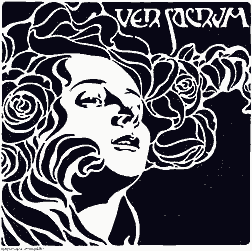






It is a direct descendent of the arts and crafts movement.
A rebellion against the entire Victorian sensibility.
The first commercial art consistently used to enhance the beauty of industrial products.
Although the Art nouveau decorative style was ultimately limited-and thus incapable of realizing such a vision= it provided the base.
Early formal characteristics:
- Organic, leafy motif
- Odd blend of art and practicality (functional aesthetics)
- Curvilinear and floral abstraction
Decadents (another faction)
- Fascination with mysticism
- Development of a hierarchy of exotic goddesses and nymphets
- Fantastic, mysterious, esoteric, kitsch (low quality)
Rationalists
- Seeing the arts as servants of life
- Architectonic from than organic form; logical, geometric constructions
- Positive way of seeing the machine; to disseminate beauty as well as progress or comfort throughout society
French/Belgian
- Toulouse le trec
- Rococo-inspired lines
- Brilliant coor palette
- Combining Japanese elegance
- Symbolist mystery
- Post-impressionist vision
- Art nouveau posters became popular form of mass art























































